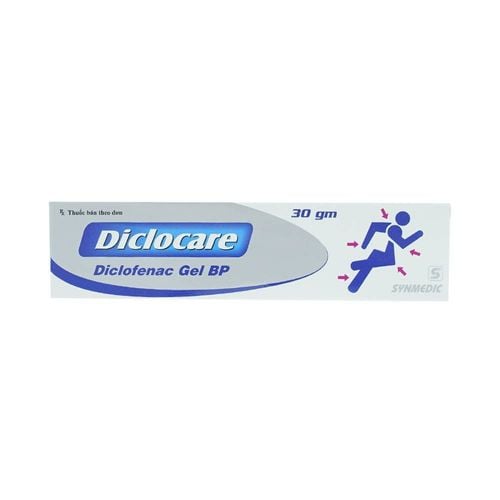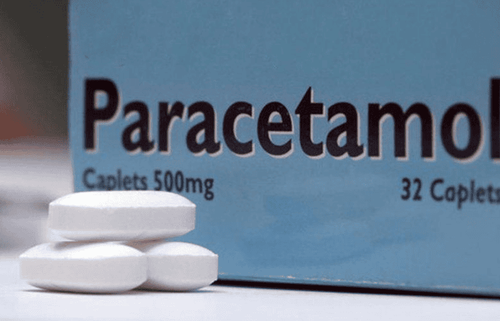This is an automatically translated article.
Paracetamol and Ibuprofen are widely used active ingredients with analgesic, antipyretic and anti-inflammatory effects. The use of Piantawic with ingredients including the above 2 active ingredients helps bring better and more convenient treatment effects. So what does Piantawic do?
1. What is Piantawic?
Piantawic is a product of TV.Pharm Pharmaceutical Joint Stock Company, the main active ingredient is Paracetamol combined with Ibuprofen. What are the effects of Piantawic? This product is used in the treatment of mild to moderate musculoskeletal pain. In addition, Piantawic drug also effectively relieves headaches caused by mental stress, menstrual pain, toothache, pain relief after tooth extraction and minor surgery.
Piantawic medicine is made in the form of capsules, each box includes 10 blisters, each blister contains 10 pills respectively.
Composition and content of Piantawic:
Paracetamol: 325mg; Ibuprofen: 125mg.
How does Piantawic work?
Indications of Piantawic:
Shoulder pain, neck pain, back pain; Muscle strain in the forearm or lower leg; Stiff neck muscles; Arthritis , rheumatism; Bursitis; Tendonitis, sprain; Headaches due to mental stress; Dysmenorrhea; Toothache; Pain after tooth extraction or minor surgery.
3. Pharmacological characteristics of Piantawic
3.1. Pharmacodynamics Paracetamol belongs to the group of non-steroidal anti-inflammatory drugs, and Ibuprofen is a non-steroidal anti-inflammatory drug (NSAID).
Ibuprofen when used in low doses provides pain relief. When administered at high doses above 1200 mg/day, Ibuprofen initiates its anti-inflammatory effect by blocking prostaglandin biosynthesis by inhibiting cyclooxygenase enzyme activity.
Piantawic is a combination product of the two active ingredients above, so it both supports pain relief, reduces fever and has an effective anti-inflammatory effect.
3.2. Pharmacokinetics Active ingredient Paracetamol is rapidly and almost completely absorbed after oral administration. It is then rapidly and evenly distributed in most body tissues. The half-life of Paracetamol in plasma is about 1.25 - 3 hours.
Regarding absorption, Ibuprofen after oral administration will reach maximum serum concentrations after 90 minutes. The half-life is about 1-2 hours. After entering the blood, up to 99% of Ibuprofen will be bound to plasma proteins. Active ingredients of this NSAID group are eliminated mainly in the urine.
4. Instructions for using Piantawic
4.1. Dosage and usage Piantawic is used orally, after eating with the recommended dose as follows:
Adults: 1 - 2 tablets/time, 3 times per day; Children 12 years and older: 1 tablet/time, 1-2 times daily. The above recommended dosage is for reference only. The specific dose will depend on the doctor's prescription after assessing the condition and disease severity of each specific patient.
4.2. Overdose and management Paracetamol poisoning usually occurs after a single toxic dose of the patient or from repeated high doses of Paracetamol (eg, 7.5-10g/day, for 1-2 days) or Long-term use of the drug causes liver toxicity. Manifestations of Paracetamol poisoning include nausea, vomiting, abdominal pain, blue-green mucous membranes or nails. How to handle cases of Paracetamol poisoning should ensure the following issues:
Active supportive treatment; Gastric lavage in all cases and preferably within 4 hours of ingestion; Antidote therapy includes the use of sulfhydryl compounds (effective when intervened for less than 10 hours after taking paracetamol) or possibly methionine; In some cases, activated charcoal and/or salt bleach can be used to reduce absorption of paracetamol. With cases of Ibuprofen poisoning, patients often have symptoms such as headache, tinnitus, abdominal pain, nausea, vomiting, body fatigue, lethargy, depression of the central nervous system or even convulsions. How to handle Ibuprofen overdose:
Gastric lavage, induce vomiting or take activated charcoal; Severe cases of poisoning require hemodialysis or blood transfusion.
5. Piantawic side effects
Similar to other drugs, patients may experience some unwanted effects during the use of Piantawic. However, these side effects are relatively rare.
Side effects of Ibuprofen:
Fever; Tired; Abdominal bloating, nausea, vomiting; Headache, dizziness, lightheadedness; Jitter; Erythema, rash. Side effects of Paracetamol:
Allergies; Skin rash; Vomiting, nausea; In some cases, there may be a decrease in all blood cells such as white blood cells, red blood cells; Hepatic failure (due to hepatocellular destruction) with prolonged high doses.
6. Contraindications of Piantawic
Piantawic is contraindicated for use in the following cases:
People who are allergic to Paracetamol, Ibuprofen or any of the ingredients in Piantawic; Use in combination with other NSAIDs; People with G6PD (glucose-6-phosphate dehydrogenase) deficiency; Progressive peptic ulcer disease; Allergy or hypersensitivity to Aspirin or to other non-steroidal anti-inflammatory drugs (manifested as bronchial asthma attacks, rhinitis, urticaria after taking the drug); Patients with a history of asthma or diseases causing bronchospasm, hemostatic disorders, cardiovascular diseases, peptic ulcers, liver or kidney failure; The patient is being treated with the anticoagulant Coumarin; Patients with congestive heart failure, volume depletion due to diuretics or renal failure; Colloidal disease; Women in the last 3 months of pregnancy.
7. Some issues to be careful when using Piantawic
Continuous use of Piantawic for 2 weeks or more may lead to impaired liver function and/or renal failure. At the same time, when using Piantawic, the patient should limit the use of alcohol due to the risk of increased liver toxicity of Paracetamol; Respiratory depression in patients with a history of asthma or in acute bronchial asthma or who are allergic to NSAIDs; Use of Ibuprofen can lead to increased blood pressure or worsen hypertension; Physicians should warn patients about some signs of serious skin reactions such as Steven-Johnson syndrome, toxic epidermal necrolysis (TEN) or Lyell's syndrome; Cardiovascular thromboembolic risk: Non-steroidal anti-inflammatory drugs (except aspirin) when administered systemically may increase the risk of cardiovascular thrombosis, including myocardial infarction and acute stroke. . This risk is very serious to health and can lead to death, appears early in the first few weeks and increases with time taking the drug. Note that the risk of cardiovascular thrombosis is observed mainly in cases of high-dose NSAID use; Ability to drive and use machines: Piantawic should not be used by people who are driving and operating machinery; Pregnancy: Do not use Ibuprofen for pregnant women in the last 3 months without a doctor's prescription; Breastfeeding women should be careful when using Piantawic.
8. Piantawic Drug Interactions
High and prolonged use of Paracetamol may lead to a slight increase in the anticoagulant effect and indandion derivatives; Long-term heavy alcohol use, treatment with anticonvulsants (such as phenytoin, barbiturates, carbamazepine...), Isoniazid and anti-tuberculosis drugs are factors that increase the risk of hepatotoxicity of Paracetamol; Ibuprofen when used in combination with other non-steroidal anti-inflammatory drugs increases the risk of bleeding from peptic ulcers; Ibuprofen acts to reduce the ability of diuretics to excrete sodium. Piantawic is a drug containing 2 active ingredients Paracetamol and Ibuprofen. The drug has an effective pain reliever and anti-inflammatory effect. To avoid side effects, patients should carefully read the instructions or consult a doctor or pharmacist.
Follow Vinmec International General Hospital website to get more health, nutrition and beauty information to protect the health of yourself and your loved ones in your family.
Please dial HOTLINE for more information or register for an appointment HERE. Download MyVinmec app to make appointments faster and to manage your bookings easily.













